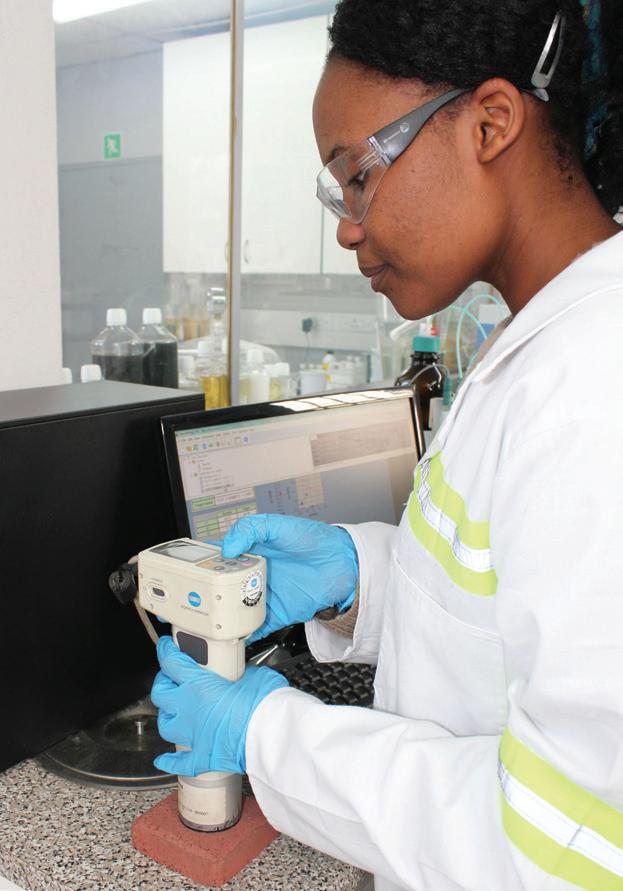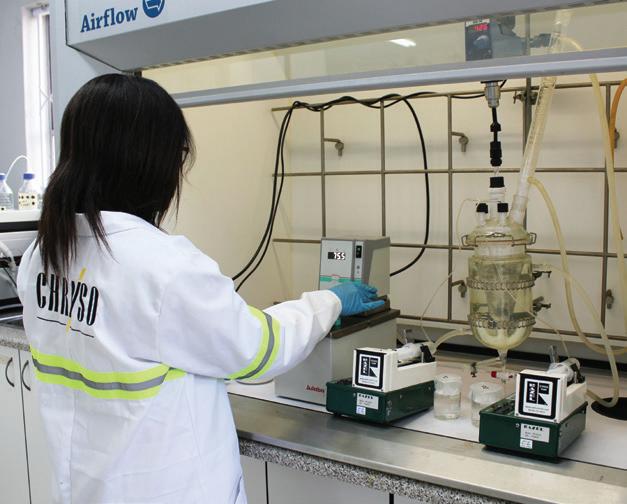
2 minute read
NEW LABORATORY PROVIDING SOLUTIONS
CMA non-producer member Chryso Southern Africa has upgraded its Jet Park laboratory in order to expand its solutions to customers in fields including aggregates, concrete aesthetics and cement. Sta f f ed by specialist engineers in inter face physical chemistry, the laboratory conducts both research and development (R&D) and testing. It also designs its own molecules for industrialscale production.
“There are a number of challenges facing our customers, including energy costs, environmental regulations and the recently introduced carbon tax,” says Mpume Mlalazi, R&D manager at Chryso Southern Africa. “By enhancing our world-class laboratory facility, Chryso can develop solutions that mitigate these challenges.”
Special services Among the capabilities o f the laboratory is a recently-launched sand a n d c l a y d i a g n o s i s tool (patent pending ) for accurate quantification of delirious clay minerals in aggr egat es, say s Mlala zi . T his helps customers address the growing issue o f problematic aggregates in a cost-ef fective and environmentally responsible way.
“Our solutions, rheology robustness enh an c er s an d cl ay en abl er s us e polymer science to allow customers to use readily available aggregates, without having to wash the material extensively with water,” she says. “The environmental benefits of this technology are substantial, especially in water-scarce areas.”
The facility has an extensive colourtesting capability to support Chryso’s new concrete aesthetic range. Accurate measurement of colour can be conducted, allowing customers to easily match the colours required for a particular project. The expansion of technology also means that the laboratory can scientifically test demoulding oils, another important aspect of the company’s offering.
Cement testing Mlalazi highlights that the laboratory has expanded its expertise into cement testing as well. “As part of our R&D function, we’ve acquired additional equipment to facilitate testing of cement,” she says. “This can now be done in a pure molecular chemistry environment.”
In addition, microconcrete evaluation is used to optimise admixture selection to cement performance. She emphasises that this work has put the company “ahead of the game” in finding energy-saving solutions and meeting the impact of carbon tax legislation. The laboratory can assist with testing and R&D related to both extended cement and concrete. “A l l w o r k i s c o n d u c t e d w i t h i n stringent standards,” she says. “These include the ISO 9001 quality system, ISO 14001 for environmental protection and ISO 18000 for safety. We also test water quality to ensure we only discharge clean water and recycle water wherever possible.”
T h e c om p a n y i s c omm i t t e d t o research, which is enhanced by collaborations with local universities. The laboratory also engages graduates from these universities, who are mentored by Chryso specialists as part of their professional development.


(Top): New laboratory equipment for wet cement chemistry testing.
(Above left): Mpume Mlalazi, research and development manager at Chryso Southern Africa.










